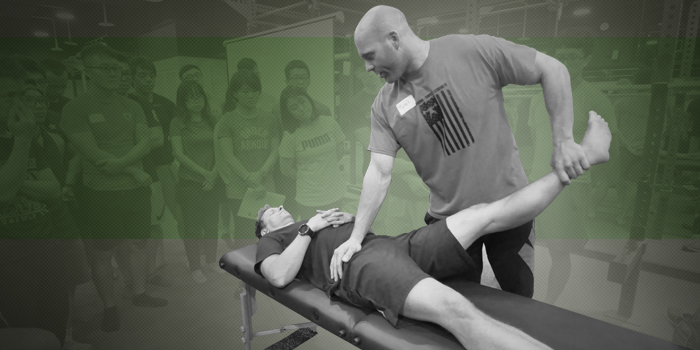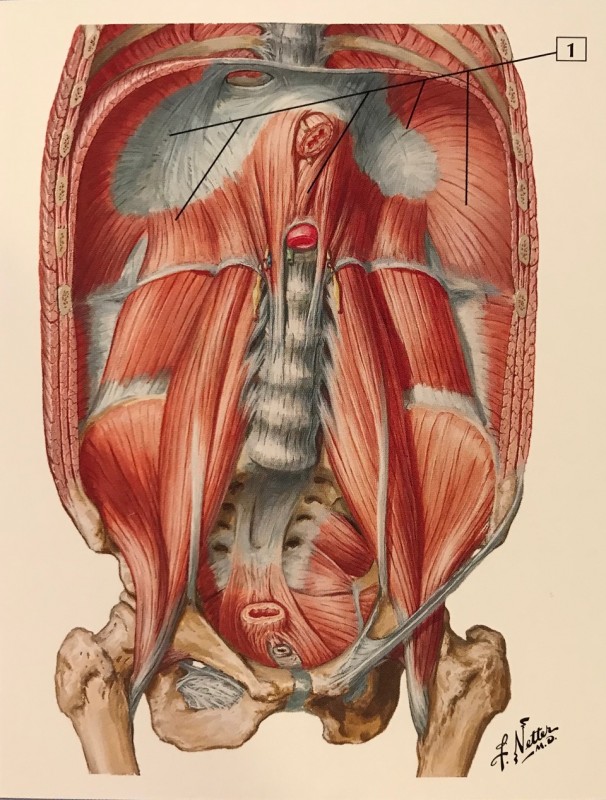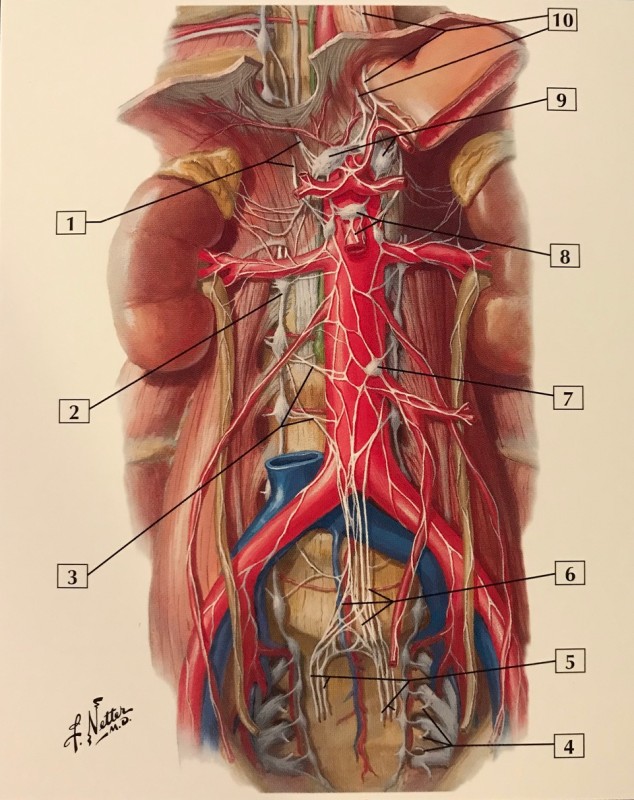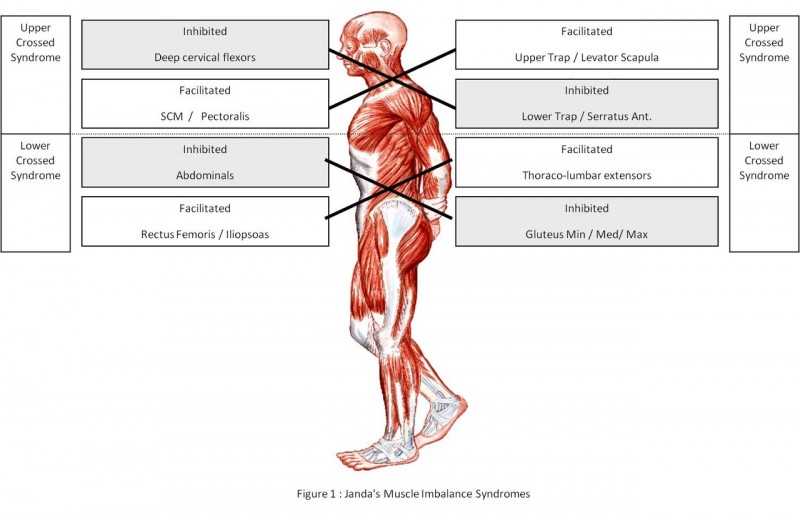
As you can tell from the title, unlocking the power of breathing is a BIG game changer in human performance. Gaining a competitive advantage is all about finding a tweak, cue, or method that allows your body to better accomplish the performance task at hand. There are MULTIPLE videos, articles, and blogs that detail Dave Tate’s cue for how to take in air properly and that will make a night-and-day difference for those who are not performing this technique correctly. Take a moment to review one of these now before moving forward. For some individuals, understanding why a cue works so well helps to reinforce its importance. The purpose of this article is to reinforce WHY this cue is so important for those individuals.
Normal and Abnormal Breathing
Breathing is the single most important activity you do. Clearly without air, we die, but there are multiple other vital processes that live and die with proper breathing.
RECENT: Should Kids Play Youth Football?
The correct mechanism of breathing involves the activation and lowering of the diaphragm and is characterized by the expansion of the belly during inspiration. This expansion increases the volume and decreases air pressure in the lower lung fields to the point where there is less pressure in the lungs than in the atmosphere. The difference in pressure allows for the passive movement of air from the external environment to the lungs. Therefore, if you hear the descriptive terms of diaphragmatic, belly, or passive breathing, they are all talking about the same mechanism of a normal breath. When proper sequencing occurs during inspiration, a diaphragmatic breath creates a cascade of events that has a drastic effect on stabilizing the lower back and hips.
Abnormal breathing patterns are often a result of what is called chest or "labored" breathing. This type of breathing occurs when an individual forcefully contracts through the scalenes, pec, and other accessory breathing muscles to expand the lung fields through the upper part of the chest. This can be identified by observing the rising of the chest or shoulders when inspiring. Labored breathing is an incredibly common mistake when setting up for a lift, as it severely compromises your hip and lower back stability.
Musculoskeletal Anatomy of The Diaphragm
To better understand the impact that the diaphragm has on the body, let’s look at the anatomy of the diaphragm and how it relates to the other supportive structures of the lower back and hip complex.
Image credit: Atlas of Human Anatomy (Frank H. Netter)
The diaphragm is a dome-shaped muscle featuring three “portions” that attach to the entire thoracic cage, sternum, and L1-L3 vertebrae. These portions converge to a central tendon. When the diaphragm contracts, this dome lowers and expands the lung fields as mentioned above. Upon further analysis of the diaphragm we will discover some important associations that begin to shape the importance of a proper breath.
The diaphragm extends over a couple of important structures involved with the hip and lower back. These extensions yield physical connections with the (ilio)psoas and quadratus lumborum (QL) via the medial and lateral arcuate ligament. Ligaments are often thought of for their ability to transfer force and to resist stresses, such as at the knee, but another important characteristic of ligaments is their tendency to be highly innervated structures. By understanding the existence of a physical attachment through a highly innervated ligament, we can begin to understand that the dysfunction of the diaphragm resulting from improper breathing mechanics will absolutely influence the function of the psoas and QL.
Furthermore, the diaphragm contains three large openings that allow for the passage of important structures, like the esophagus and aorta, from the thoracic cavity into the abdomen. We can see another big piece of the puzzle form by understanding that these openings also allow for the entry of some very important neurological structures, namely the vagus nerve (10).
Image credit: Atlas of Human Anatomy (Frank H. Netter)
The vagus nerve is widely known as the largest driver of the parasympathetic tone in the body. Its passage into the abdominal cavity and its relationship to the diaphragm allow for proper breathing to modulate the autonomic nervous system to help to keep the athlete from flipping too far over into a sympathetic “survival mode” that can also facilitate compensation patterns in the body.
Introduction to Janda Concepts
Before jumping into the vast ocean of possibilities that a bad breath can cause, it’s best to take a step back and understand the intricacy between anterior(front) and posterior(back) structures in the stabilization and movement in the lumbar spine, pelvis, and hip.
Lower-crossed syndrome is a term first described by Vladimir Janda and describes the objective observations of the dysfunction of the physical and neural relationships among the spinal, pelvic, and hip positions. Each muscle in the body has an optimal resting length at which it is able to contract and produce an optimal amount of force. When lower-crossed syndrome is present, there will either be a posterior or anterior tilting of the pelvis and either an increased or decreased spinal curve in the lumbar spine lordosis.
Image credit: www.jandaapproach.com
As pictured above, the dysfunction can involve a multitude of structures. The key takeaway point here is that multiple structures can be involved and that regardless of which muscles are shortened and which muscles are lengthened, neither are OPTIMAL – meaning neither will contract with the correct timing, strength, or range of motion.
It is also important to understand that these are all observed scenarios or possibilities. When I analyze a patient or athlete’s breathing, I cannot predict which of these tight or lengthened muscles will be restored to normal by correcting breathing. I do know, however, that if the body is addressed by normalizing movement patterns based upon how the nervous system prioritizes these movements, these areas will return to normal function on their own. When it comes to priority, proper breathing is first and foremost. This is why changing your breathing mechanics makes such a profound difference in your performance.
Imagine that you are on a team at work in which each individual had his or her own unique duties and tasks. What happens if someone doesn’t show up to work? Typically, this does not mean that everyone stops what he or she is doing and that nothing gets accomplished. Instead, the boss will distribute the duties of the absent worker to someone else to get the job done. This adds additional stresses due to increased workloads to the workers involved. It also probably means that the overstressed workers are going to have to prioritize what work they accomplish, as they cannot effectively do two jobs at once. This is what occurs in the body and is why pain, injury, or a lack of performance can occur away from the actual cause of the problem.
Breathing Dysfunction
So, let’s get down to it. Why is breathing properly so important in your ability to perform? When a labored breath occurs, say during the setup for the squat, the expansion of the upper lung fields occur from the contraction of accessory breathing muscles, effectively shutting down the diaphragm. In general, this is going to decrease the amount of air that can be pulled into the lungs, and it will decrease the pressure generated in a Valsalva movement during a lift. Remembering back to the anatomical connections to the psoas and QL, what effects the diaphragm will also affect these muscles and can be the beginning of a domino effect of dysfunction.
MORE: Breathing IS NOT Bracing
From the front/anterior, the psoas’s primary function is hip flexion. It is the most powerful flexor of the hip and is the only muscle that can initiate hip flexion on its own. If the psoas is shut down due to an improper breath, hip flexion is now left to its own cascade of dysfunction. In response to a dysfunction with the psoas, the nervous system will recruit accessory hip flexors and stabilizers to initiate hip flexion and maintain the joint through a range of motion. The nervous system is a very skilled organism for survival, and even if the psoas doesn’t show up to the party, the nervous system will find other muscles to help initiate movement in its place.
On the posterior side, we can have a similar cascade of events involved with the QL, but remembering back to Janda’s lower-crossed syndrome, the antagonists of a dysfunctional muscle are also affected via reciprocal inhibition. So, imagine a scenario in which a dysfunctional breath leads to decreased stability in the lumbar spine due to decreased intraabdominal pressure from a lack of diaphragmatic contraction. This instability leads to the recruitment of the psoas and QL to prioritize lumbar stability while at the same time taking away the ability of the glutes to drive hip extension through reciprocal inhibition. Keeping in mind all of the other structures involved in lower-crossed syndrome, you can now see the complexity and possibility of the numerous compensation patterns that can occur at the hip pelvis and lumbar spine simply due to an incorrect cue.
To summarize, the body knows how to get the job done so long as you don’t stand in its way. The best way to facilitate ultimate performance is by putting your body in the best environment possible to do so. So, the next time a cue like breathing in through the belly works and a weight that you just struggled with flies up like its nothing, realize that this cue happens to be the correct cue for you to unravel some of these dysfunctional patterns and unlock your body’s full potential.













